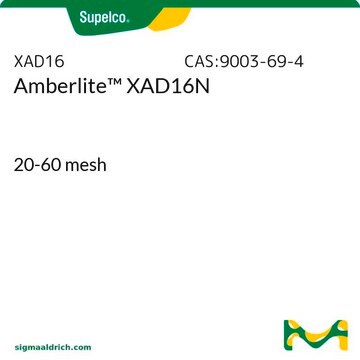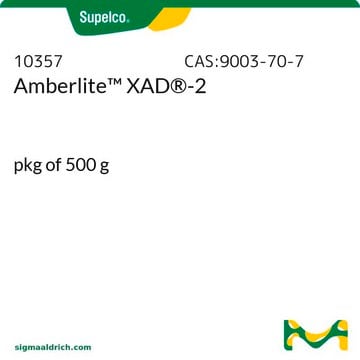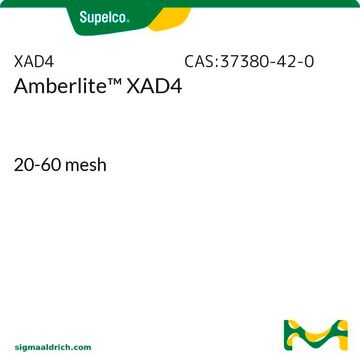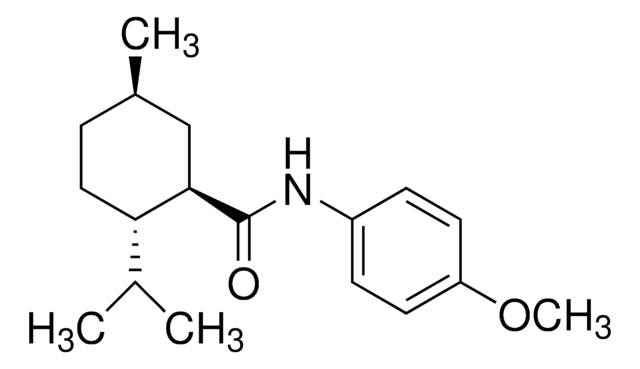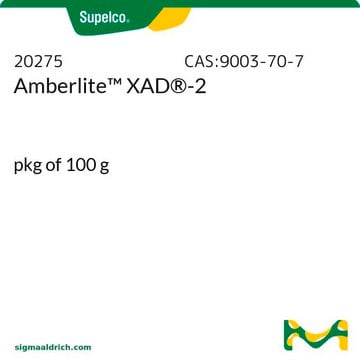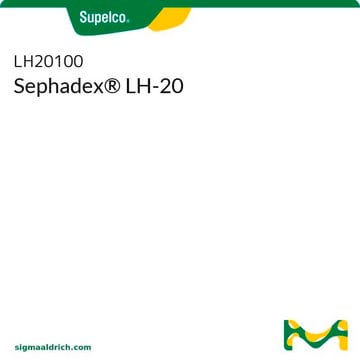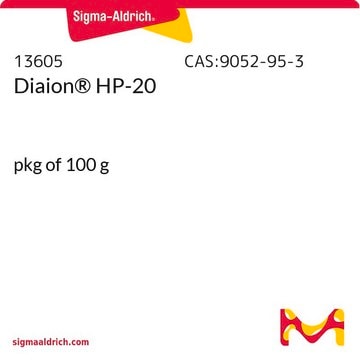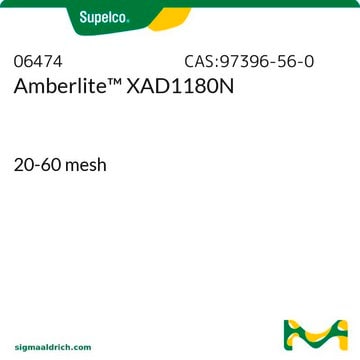XAD7
Amberlite™ XAD7HP polymeric adsorbent
20-60 mesh
Synonym(s):
weak anion exchange resin
About This Item
Recommended Products
product name
Amberlite™ XAD7HP, 20-60 mesh
vapor density
<1 (vs air)
vapor pressure
17 mmHg ( 20 °C)
form
beads
autoignition temp.
800 °F
technique(s)
LPLC: suitable
surface area
380 m2/g
matrix
acrylic
matrix active group
polymer
particle size
20-60 mesh
560-710 μm
pore size
0.5 mL/g pore volume
300-400 Å mean pore size
separation technique
reversed phase
Looking for similar products? Visit Product Comparison Guide
Related Categories
General description
Application
Other Notes
Mesh 20-60 is Cat. No. XAD7
Mesh 20-50 is Cat. No. 06445
Legal Information
Storage Class
11 - Combustible Solids
wgk_germany
WGK 3
flash_point_f
Not applicable
flash_point_c
Not applicable
ppe
Eyeshields, Gloves, type N95 (US)
Certificates of Analysis (COA)
Search for Certificates of Analysis (COA) by entering the products Lot/Batch Number. Lot and Batch Numbers can be found on a product’s label following the words ‘Lot’ or ‘Batch’.
Already Own This Product?
Find documentation for the products that you have recently purchased in the Document Library.
Our team of scientists has experience in all areas of research including Life Science, Material Science, Chemical Synthesis, Chromatography, Analytical and many others.
Contact Technical Service